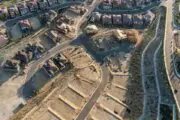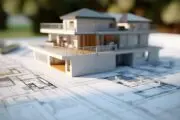
As more renters return to Vancouver’s urban areas, purpose-built rental rates across the region continued to rise during the first months of 2022.
In its Vancouver Rental Take report for Q1-2022, Zonda Urban stated that the Metro Vancouver rental market kicked off the year with strong renter activity in Q1-2022. As most sub-markets experienced higher rental prices, availability rates fell in tandem. However, Metro Vancouver could see additional inventory hit the marketplace in the second-half of 2022 as multiple projects complete construction.
“The lifting of Covid restrictions along with an increase in hybrid work options has allowed for the continuation of renters moving back into urban sub-markets and transit accessible neighbourhoods, which was a trend that emerged in 2021,” said the report. “The most notable observation over the first quarter of 2022 was the steep increase in average rental rates being achieved throughout the market.”
Available listings drop from quarter to quarter
In Q1-2022, one low-rise wood frame development and two concrete high-rise developments started to lease in Metro Vancouver. A total of 199 new rental units were released to the market, 72 per cent less than the 702 units that became available during Q4-2021.
During the first quarter of 2022, purpose-built rental availability dropped 3.4 per cent on a quarterly basis. Availability within fully-leased buildings — those projects that completed their initial leasing campaign and rented all of their units — declined 0.5 per cent quarter-over-quarter to 1.2 per cent during Q1-2022. Meanwhile, availability in active projects — buildings that are in their initial lease-up campaign — dropped to three per cent, down from five per cent in Q4-2021.
The North Shore sub-market had the most new rental inventory in the region during Q1-2022 with 228 available units, down slightly from the previous quarter.
“The decrease in overall availability in Metro Vancouver primarily resulted from the limited number of releases into a market combined with persistent demand,” the Zonda Urban report noted. “Of the 199 units released onto the market over the quarter, 149 were leased.”
Zonda Urban is currently tracking 20 projects with 1,792 units in the interior finishing stage of construction that are likely to be completed within the next six to nine months.
Price difference between most and least expensive sub-markets widen
As fewer purpose-built rental units became available for lease, rental rates in Metro Vancouver grew during Q1-2022.
The overall average per square foot for rents in Q1-2022 grew $0.39, or 11.8 per cent, compared to last quarter. When comparing recently turned-over units to initial lease-up rates, prices for junior one bedroom units have grown the most, rising 32 per cent.
The difference between the most and least expensive submarkets in Metro Vancouver — Downtown Vancouver and Abbotsford — was $2.53, a notable increase from $1.85 that was recorded in Q4-2021. In Downtown Vancouver specifically, rental rates increased $0.53 during Q1-2022 as a result of low inventory levels and new project launches. In the same quarter, ongoing absorption of actively leasing projects pushed rental rates up in Vancouver East and Surrey by $0.18 and $0.22 per square foot.
“Landlords are continuing to push rental rates as high demand for rental units is met with low levels of availability across Metro Vancouver,” said the report. “As prices continue to rise, it is possible that some renters may be pushed out of the more urban locations of Metro Vancouver or may need to consider sharing smaller accommodation with a partner or roommate.”
Zonda Urban explained that more renters have been moving back to urban centres as employees work from the office more frequently. Despite the fact that multiple rental projects will launch over the next six months, per square foot rental rates are expected to keep rising.
Fewer developers are offering new renters incentives these days, a trend Zonda Urban believes will continue throughout the year as “the growing level of demand for rental housing is not being met by the current supply levels.” Meanwhile, new rental developments are identifying and delivering various amenities that appeal to different demographics, such as study rooms, pet wash stations, rooftop gardens and entertainment rooms.






